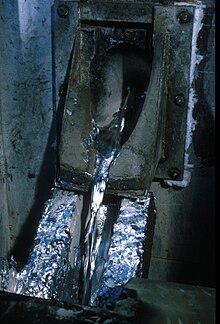Expendable Mold Casting
– Includes sand, plastic, shell, plaster, and investment moldings
– Temporary, non-reusable molds are used
– Widely used in various industries such as automotive, aerospace, and medical devices
– Offers cost-effective production
– Different pouring methods can be used, such as gravity, vacuum, or low pressure
Non-expendable Mold Casting
– Permanent molding process
– Includes four different methods: permanent, die, centrifugal, and continuous casting
– Improves repeatability and delivers near net shape results
Permanent Mold Casting
– Employs reusable molds made from metal
– Gravity, gas pressure, or vacuum used to fill the mold
– Common casting metals: aluminum, magnesium, and copper alloys
– Slush casting produces hollow castings
– Limited life of permanent molds
Die Casting
– Forces molten metal under high pressure into machined mold cavities
– Nonferrous metals used, such as zinc, copper, and aluminum-based alloys
– Suited for applications requiring small to medium-sized parts with good detail and dimensional consistency
– Ferrous metal die castings are possible
– Provides fine surface quality
Other Casting Processes
– Includes semi-solid metal casting, centrifugal casting, and continuous casting
– Each process has unique characteristics and applications
– Semi-solid metal casting reduces or eliminates residual porosity
– Centrifugal casting is used for railway wheels and small art pieces
– Continuous casting is used for high-volume production of metal sections
Please note that the content has been grouped based on similar concepts and may not cover all the information provided. Source: https://en.wikipedia.org/wiki/Casting_(metalworking)
In metalworking and jewelry making, casting is a process in which a liquid metal is delivered into a mold (usually by a crucible) that contains a negative impression (i.e., a three-dimensional negative image) of the intended shape. The metal is poured into the mold through a hollow channel called a sprue. The metal and mold are then cooled, and the metal part (the casting) is extracted. Casting is most often used for making complex shapes that would be difficult or uneconomical to make by other methods.


Casting processes have been known for thousands of years, and have been widely used for sculpture (especially in bronze), jewelry in precious metals, and weapons and tools. Highly engineered castings are found in 90 percent of durable goods, including cars, trucks, aerospace, trains, mining and construction equipment, oil wells, appliances, pipes, hydrants, wind turbines, nuclear plants, medical devices, defense products, toys, and more.
Traditional techniques include lost-wax casting (which may be further divided into centrifugal casting, and vacuum assist direct pour casting), plaster mold casting and sand casting.
The modern casting process is subdivided into two main categories: expendable and non-expendable casting. It is further broken down by the mold material, such as sand or metal, and pouring method, such as gravity, vacuum, or low pressure.
